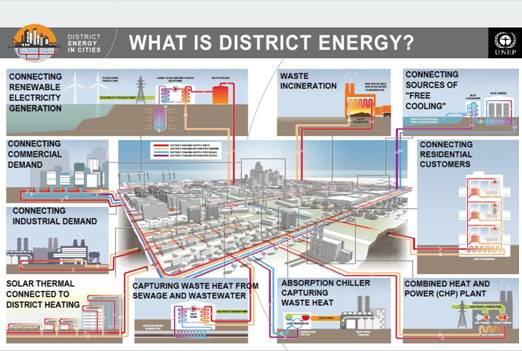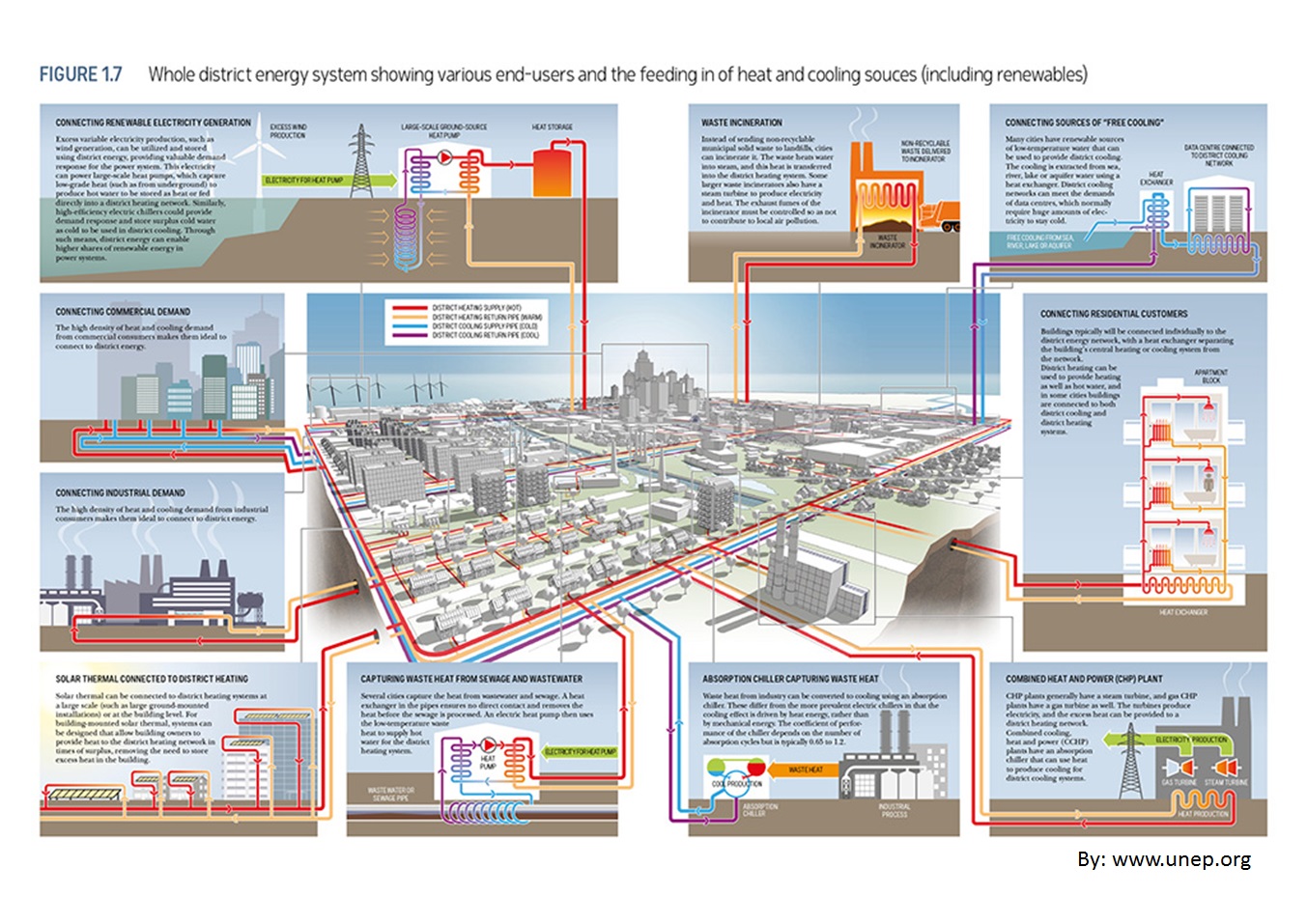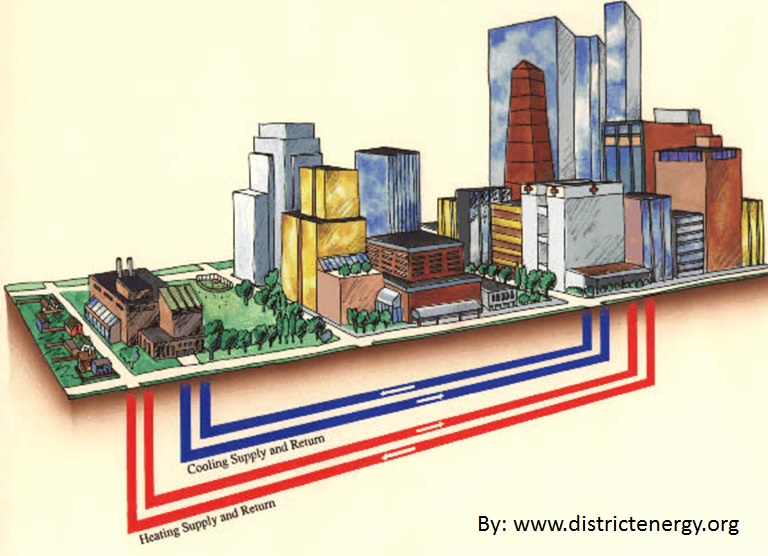
[vc_row][vc_column][vc_column_text]District energy systems produce steam, hot water or chilled water at a central plant. The steam, hot water or chilled water is then piped underground to individual buildings for space heating, domestic hot water heating and air conditioning. As a result, individual buildings served by a district energy system don’t need their own boilers or furnaces, chillers or air conditioners. The district energy system does that work for them, providing valuable benefits[/vc_column_text][/vc_column][/vc_row][vc_row][vc_column][vc_column_text] [/vc_column_text][/vc_column][/vc_row][vc_row][vc_column][vc_column_text]
[/vc_column_text][/vc_column][/vc_row][vc_row][vc_column][vc_column_text]
- A district cooling system (DCS) distributes thermal energy in the form of chilled water or other media from a central source to multiple buildings through a network of underground pipes for use in space and process cooling. The cooling or heat rejection is usually provided from a central cooling plant, thus eliminating the need for separate systems in individual buildings and in cogeneration projects take advantage of Waste heat coming out from reciprocating engines (Hot water, steam) or microturbines (Steam) to drive absorption chillers and produce chilled water for conditioning air
- A DCS consists of three primary components: the central plant, the distribution network and the consumer system. The central plant may include the cooling equipment, power generation and thermal storage. The distribution or piping network is often the most expensive portion of the DCS and warrants careful design to optimize its use. The consumer system would usually comprise of air handling units and chilled water piping in the building.
- Centrally-supplied chilled water service
- Simple and proven technology
- Two basic kinds of district cooling: Advanced, using low temperature chilled water supply and traditional, using normal temperature chilled water supply
- Provides numerous benefits to building owners
- Eliminates the need to raise capital to replace building chillers
- Eliminates the dependence and risk associated with CFC-based refrigerants
- Out-sources the complex problem of building cooling
- Improves availability and reliability
- District cooling means the centralized production and distribution of cooling energy. The output of one cooling plant is enough to meet the cooling-energy demand of dozens of buildings. The mission statement can be compared to that of district heating with the exception that in district cooling the energy produced and supplied to the real estate customer is cooling energy instead of heating energy, i.e. extra heat is removed from the building. Centralized production of cooling energy is more environmentally friendly and cost-effective than distributed building-specific cooling.
- Cooling of buildings is becoming more and more popular. Cooling is mostly needed in afternoons during the summer season. More and more buildings require cooling also in the winter, because lighting, ADP equipment and solar heat entering through large windows heat the indoor air. Due to the process cooling required by shop cooling equipment, the demand for district cooling stays even throughout the year.
- Compared to building-specific cooling, district cooling is a more price competitive alternative. For the customer, district cooling is a reliable and convenient source of cooling energy, because the need to acquire, service or maintain cooling equipment in buildings is eliminated. In addition, the noise, vibration and structure-born sounds of cooling equipment are removed. The space reserved for cooling equipment is freed for other purposes and the coolers visible on roofs and walls are no longer needed.
- We can provide
- Design MEP CCHP, supply main equipment (microturbine and peripherals), HVAC equipment (Absorption, electric chillers, cooling towers, pumps, BMS,) install and operate if required
[/vc_column_text][/vc_column][/vc_row][vc_row][vc_column][vc_custom_heading text=”Learn more about the Energy District Concept” font_container=”tag:h3|text_align:center”][/vc_column][/vc_row][vc_row][vc_column width=”1/2″][vc_video link=”https://youtu.be/7BznKyEb0bc”][vc_column_text]By: International District Energy Association[/vc_column_text][/vc_column][vc_column width=”1/2″][vc_video link=”https://youtu.be/NAVczZPePG4″][vc_column_text]By: International District Energy Association[/vc_column_text][/vc_column][/vc_row][vc_row][vc_column][vc_column_text] [/vc_column_text][/vc_column][/vc_row]
[/vc_column_text][/vc_column][/vc_row]
